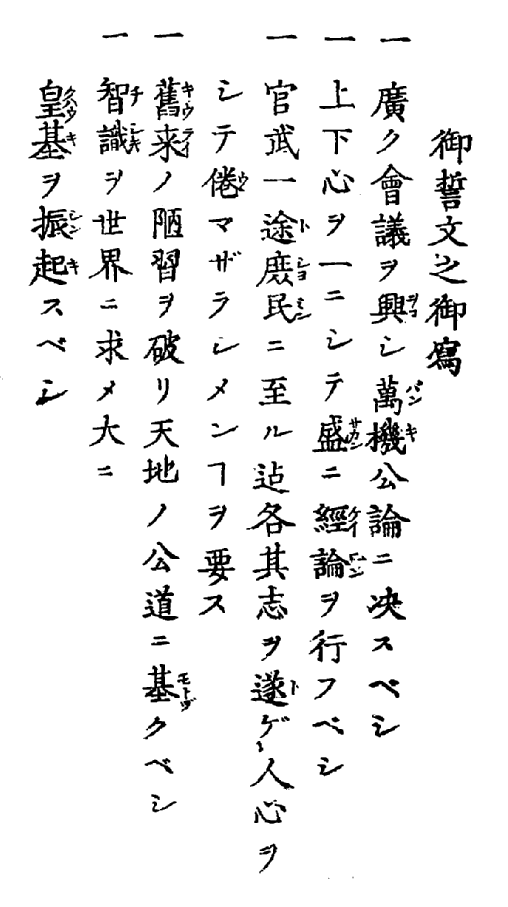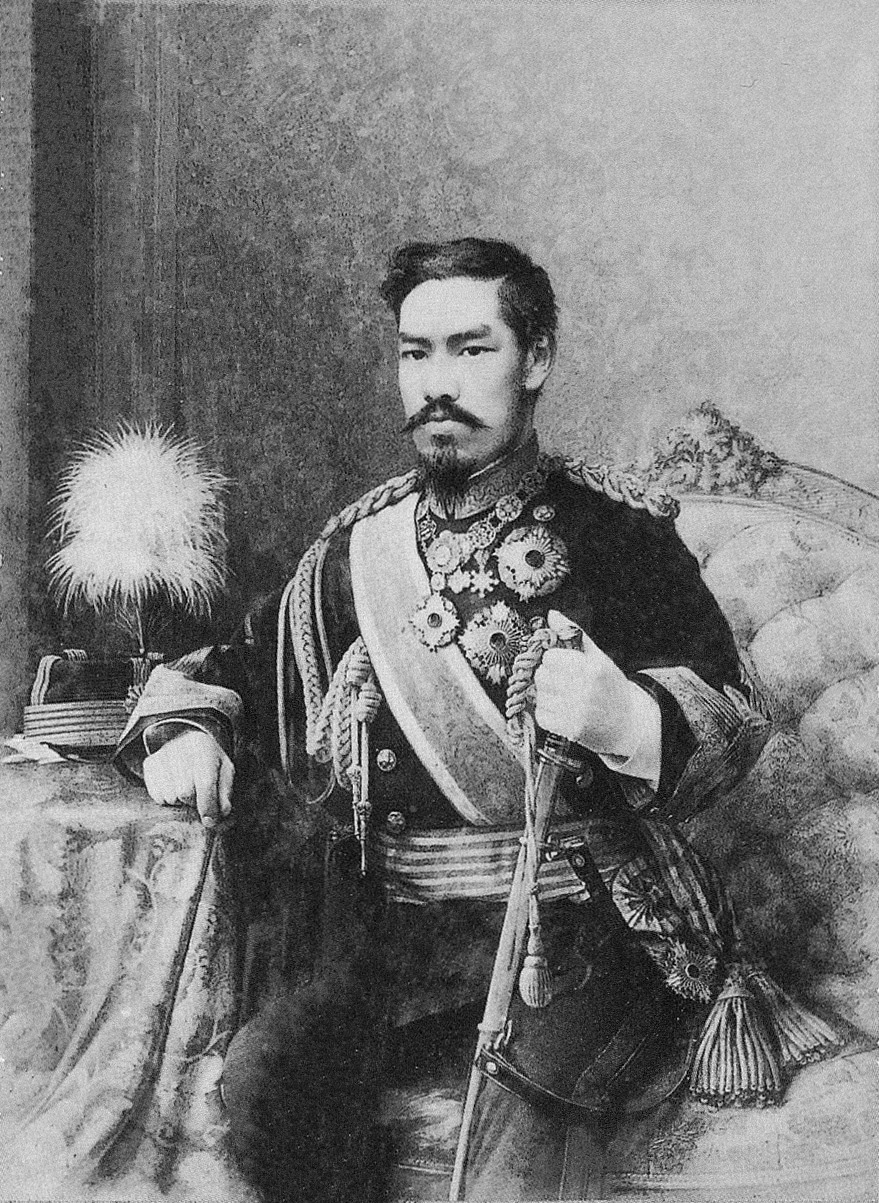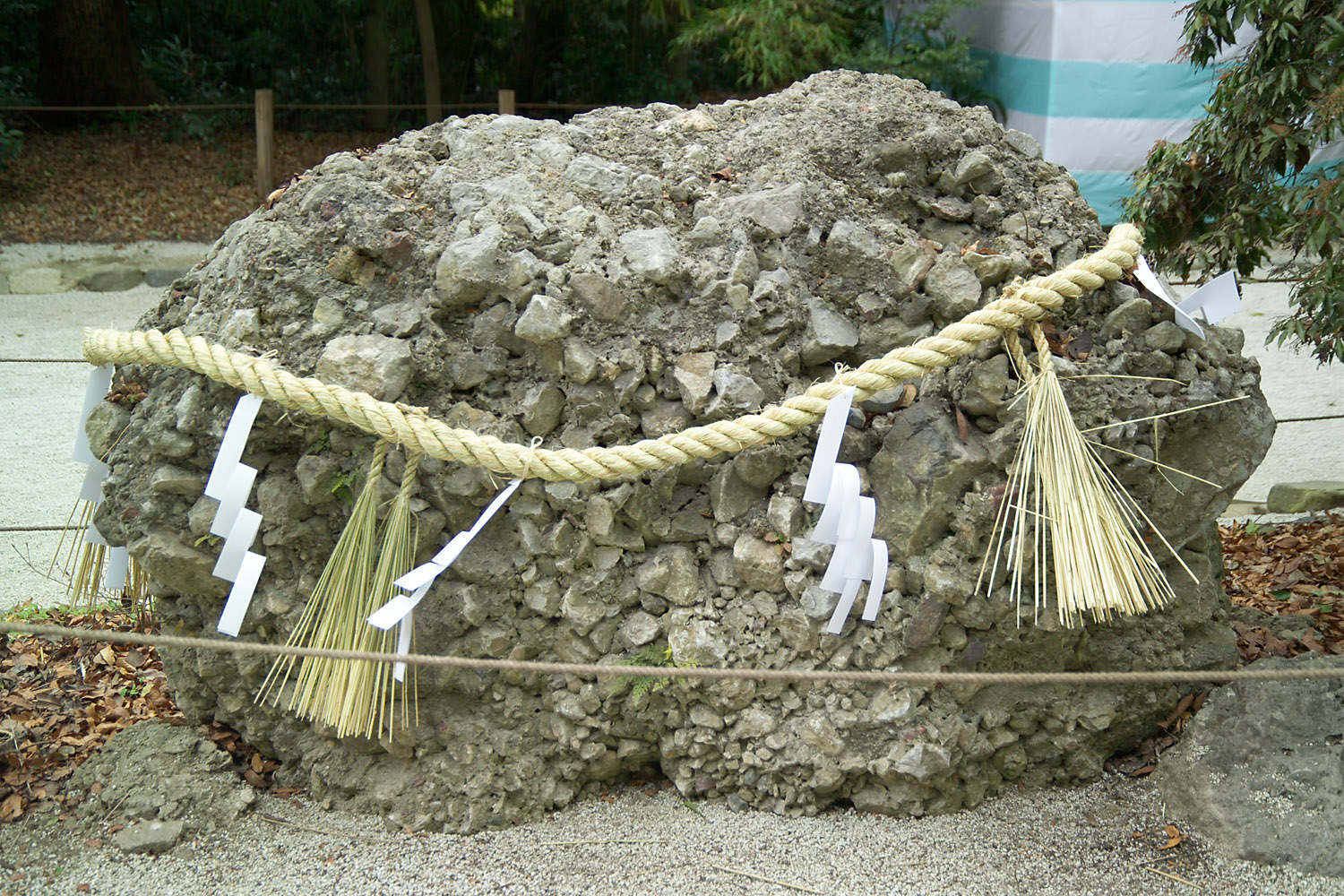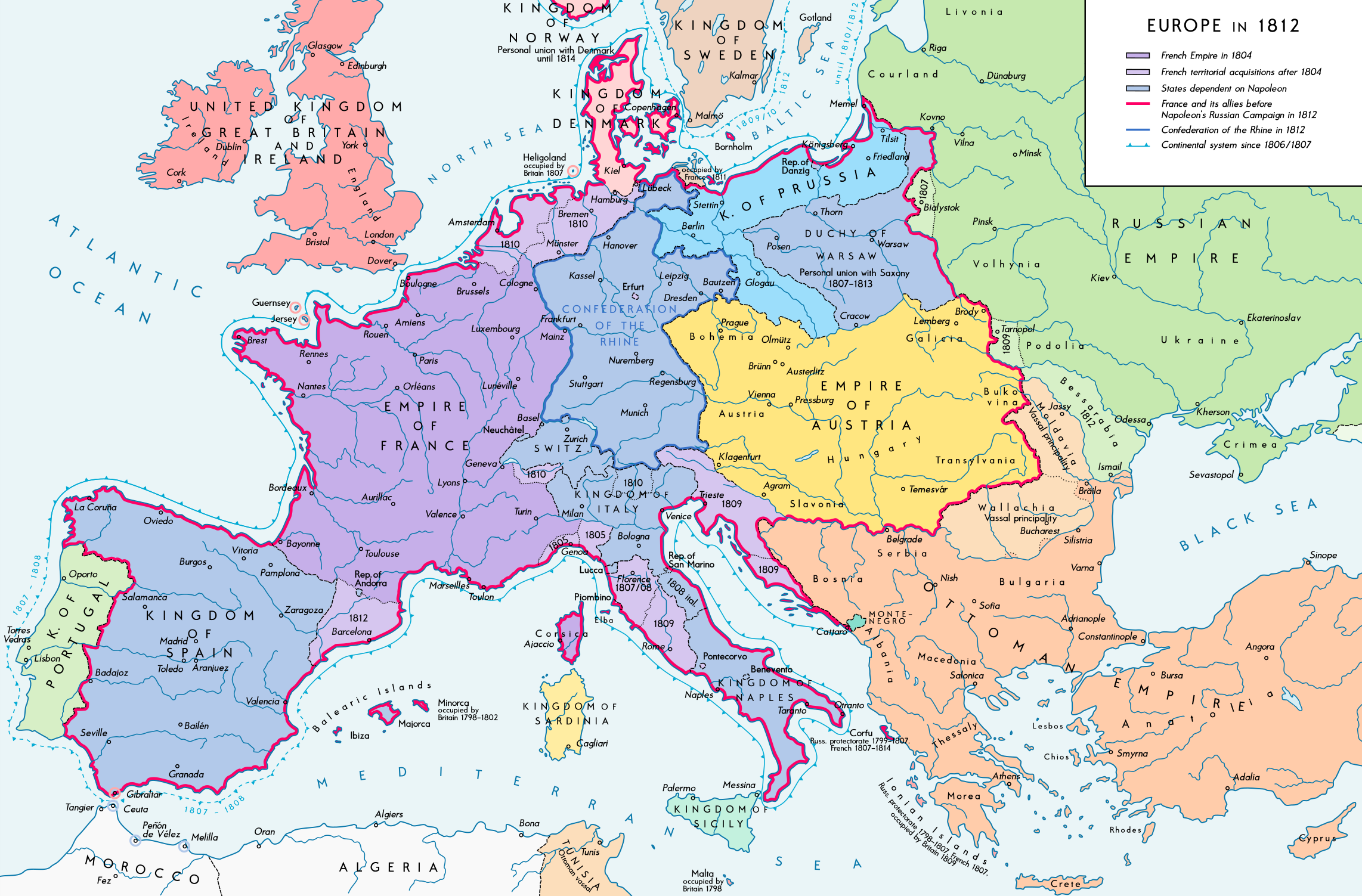|
Japanese Imperial Era
The also known as the Japanese Empire or Imperial Japan, was a historical nation-state and great power that existed from the Meiji Restoration in 1868 until the enactment of the post-World War II 1947 constitution and subsequent formation of modern Japan. It encompassed the Japanese archipelago and several colonies, protectorates, mandates, and other territories. Under the slogans of and following the Boshin War and restoration of power to the Emperor from the Shogun, Japan underwent a period of industrialization and militarization, the Meiji Restoration, which is often regarded as the fastest modernisation of any country to date. All of these aspects contributed to Japan's emergence as a great power and the establishment of a colonial empire following the First Sino-Japanese War, the Boxer Rebellion, the Russo-Japanese War, and World War I. Economic and political turmoil in the 1920s, including the Great Depression, led to the rise of militarism, nationalism and t ... [...More Info...] [...Related Items...] OR: [Wikipedia] [Google] [Baidu] |
Meiji Period
The is an era of Japanese history that extended from October 23, 1868 to July 30, 1912. The Meiji era was the first half of the Empire of Japan, when the Japanese people moved from being an isolated feudal society at risk of colonization by Western powers to the new paradigm of a modern, industrialized nation state and emergent great power, influenced by Western scientific, technological, philosophical, political, legal, and aesthetic ideas. As a result of such wholesale adoption of radically different ideas, the changes to Japan were profound, and affected its social structure, internal politics, economy, military, and foreign relations. The period corresponded to the reign of Emperor Meiji. It was preceded by the Keiō era and was succeeded by the Taishō era, upon the accession of Emperor Taishō. The rapid modernization during the Meiji era was not without its opponents, as the rapid changes to society caused many disaffected traditionalists from the former samurai ... [...More Info...] [...Related Items...] OR: [Wikipedia] [Google] [Baidu] |
Japan
Japan ( ja, 日本, or , and formally , ''Nihonkoku'') is an island country in East Asia. It is situated in the northwest Pacific Ocean, and is bordered on the west by the Sea of Japan, while extending from the Sea of Okhotsk in the north toward the East China Sea, Philippine Sea, and Taiwan in the south. Japan is a part of the Ring of Fire, and spans Japanese archipelago, an archipelago of List of islands of Japan, 6852 islands covering ; the five main islands are Hokkaido, Honshu (the "mainland"), Shikoku, Kyushu, and Okinawa Island, Okinawa. Tokyo is the Capital of Japan, nation's capital and largest city, followed by Yokohama, Osaka, Nagoya, Sapporo, Fukuoka, Kobe, and Kyoto. Japan is the List of countries and dependencies by population, eleventh most populous country in the world, as well as one of the List of countries and dependencies by population density, most densely populated and Urbanization by country, urbanized. About three-fourths of Geography of Japan, the c ... [...More Info...] [...Related Items...] OR: [Wikipedia] [Google] [Baidu] |
Tokyo City
was a Cities of Japan, municipality in Japan and part of Tokyo Prefecture (1868–1943), Tokyo-fu which existed from 1 May 1889 until its merger with its prefecture on 1 July 1943. The historical boundaries of Tokyo City are now occupied by the Special wards of Tokyo, Special Wards of Tokyo. The new merged government became what is now Tokyo, also known as the ''Tokyo, Tokyo Metropolis'', or, ambiguously, ''Tokyo, Tokyo Prefecture''. History In 1868, the medieval city of Edo, seat of the Tokugawa shogunate, Tokugawa government, was renamed Tokyo, and the offices of Tokyo Prefecture (''-fu'') were opened. The extent of Tokyo Prefecture was initially limited to the former Edo city, but rapidly augmented to be comparable with the present Tokyo Metropolis. In 1878, the Meiji government's reorganization of local governments subdivided prefectures into Counties of Japan, counties or districts (''gun'', further subdivided into Towns of Japan, towns and Villages of Japan, village ... [...More Info...] [...Related Items...] OR: [Wikipedia] [Google] [Baidu] |
Kyoto
Kyoto (; Japanese: , ''Kyōto'' ), officially , is the capital city of Kyoto Prefecture in Japan. Located in the Kansai region on the island of Honshu, Kyoto forms a part of the Keihanshin metropolitan area along with Osaka and Kobe. , the city had a population of 1.46 million. The city is the cultural anchor of a substantially larger metropolitan area known as Greater Kyoto, a metropolitan statistical area (MSA) home to a census-estimated 3.8 million people. Kyoto is one of the oldest municipalities in Japan, having been chosen in 794 as the new seat of Japan's imperial court by Emperor Kanmu. The original city, named Heian-kyō, was arranged in accordance with traditional Chinese feng shui following the model of the ancient Chinese capital of Chang'an/Luoyang. The emperors of Japan ruled from Kyoto in the following eleven centuries until 1869. It was the scene of several key events of the Muromachi period, Sengoku period, and the Boshin War, such as the Ōnin War, the Ho ... [...More Info...] [...Related Items...] OR: [Wikipedia] [Google] [Baidu] |
Charter Oath
The was promulgated on 6 April 1868 in Kyoto Imperial Palace. The Oath outlined the main aims and the course of action to be followed during Emperor Meiji's reign, setting the legal stage for Japan's modernization. This also set up a process of urbanization as people of all classes were free to move jobs so people went to the city for better work. It remained influential, if less for governing than inspiring, throughout the Meiji era and into the twentieth century, and can be considered the first constitution of modern Japan. Rules As the name implies, the text of the Oath consists of five clauses: Origin and subsequent influence The first draft of the Oath was written by junior councilor Yuri Kimimasa in January 1868, containing progressive language that spoke to the frustrations that the radical but modestly born Meiji leaders had experienced in "service to hereditary incompetents."Jansen (2002), p. 338. Yuri's language was moderated by his colleague Fukuoka Takachika in Feb ... [...More Info...] [...Related Items...] OR: [Wikipedia] [Google] [Baidu] |
Meiji Era
The is an era of Japanese history that extended from October 23, 1868 to July 30, 1912. The Meiji era was the first half of the Empire of Japan, when the Japanese people moved from being an isolated feudal society at risk of colonization by Western powers to the new paradigm of a modern, industrialized nation state and emergent great power, influenced by Western scientific, technological, philosophical, political, legal, and aesthetic ideas. As a result of such wholesale adoption of radically different ideas, the changes to Japan were profound, and affected its social structure, internal politics, economy, military, and foreign relations. The period corresponded to the reign of Emperor Meiji. It was preceded by the Keiō era and was succeeded by the Taishō era, upon the accession of Emperor Taishō. The rapid modernization during the Meiji era was not without its opponents, as the rapid changes to society caused many disaffected traditionalists from the former samurai cl ... [...More Info...] [...Related Items...] OR: [Wikipedia] [Google] [Baidu] |
Kimi Ga Yo 1930
Kimi may refer to: People * Kimi Djabate (born 1975), Bissau-Guinean Afro-beat/blues musician * Kimi Katkar (born 1965), Indian Bollywood actress and model * Kimi Koivisto (born 1992), Finnish ice hockey player * Kimi Räikkönen (born 1979), Finnish Formula One driver * Kimi Sato (born 1949), Japanese classical composer * Kimi Verma (born 1977), Indian actress Kirandeep Verma *, Japanese women's basketball player Other uses * Kimi Records, an Icelandic independent record label and distribution company * Kimi (record label), a Japanese record label founded in 1990 * ''Kimi'' (film), an American thriller film directed by Steven Soderbergh * Kimi Finster, fictional character in the animated Nickelodeon show ''Rugrats'' * KIMI (FM), a radio station licensed to Malvern, Iowa, United States * Kimi Station, a train station in Kurashiki, Okayama Prefecture, Japan * Kimi (kabane) was an ancient Japanese hereditary title denoting rank and political standing (a ''kabane'') that w ... [...More Info...] [...Related Items...] OR: [Wikipedia] [Google] [Baidu] |
Kimigayo
is the national anthem of Japan. The lyrics are from a ' poem written by an unnamed author in the Heian period (794–1185), and the current melody was chosen in 1880, replacing an unpopular melody composed by John William Fenton eleven years earlier. While the title "Kimigayo" is usually translated as "His Imperial Majesty's Reign", no official translation of the title or lyrics has been established in law. From 1888 to 1945, "Kimigayo" served as the national anthem of the Empire of Japan. When the Empire was dissolved following Surrender of Japan, its surrender at the end of World War II, the State of Japan succeeded it in 1945. This successor state was a Parliamentary system, parliamentary democracy, and the polity therefore changed from a system based on imperial sovereignty to one based on popular sovereignty. However, the Occupation of Japan, U.S. occupation forces allowed Hirohito, Emperor Hirohito to retain the throne and "Kimigayo" remained the ''de facto'' nationa ... [...More Info...] [...Related Items...] OR: [Wikipedia] [Google] [Baidu] |
List Of Territories Occupied By Imperial Japan
This is a list of regions occupied or annexed by the Empire of Japan until 1945, the year of the end of World War II in Asia, after the surrender of Japan. Control over all territories except most of the Japanese mainland (Hokkaido, Honshu, Kyushu, Shikoku, and some 6,000 small surrounding islands) was renounced by Japan in the unconditional surrender after World War II and the Treaty of San Francisco. A number of territories occupied by the United States after 1945 were returned to Japan, but there are still a number of disputed territories between Japan and Russia (the Kuril Islands dispute), South Korea and North Korea (the Liancourt Rocks dispute), the People's Republic of China and Taiwan (the Senkaku Islands dispute). Pre-1945 Colonies *Hokkaido — 1869–1918 *Kuril Islands, Chishima Islands – 1875–1918 *Ryukyu Islands – 1879–1918 *Nanpō Islands – 1891–1918 *Taiwan under Japanese rule, Taiwan and the Penghu Islands – 1895–1945 *Minamitorishima – 1898� ... [...More Info...] [...Related Items...] OR: [Wikipedia] [Google] [Baidu] |
Protectorate
A protectorate, in the context of international relations, is a State (polity), state that is under protection by another state for defence against aggression and other violations of law. It is a dependent territory that enjoys autonomy over most of its internal affairs, while still recognizing the suzerainty of a more powerful sovereign state without being a possession. In exchange, the protectorate usually accepts specified obligations depending on the terms of their arrangement. Usually protectorates are established de jure by a treaty. Under certain conditions—as with History of Egypt under the British#Veiled Protectorate (1882–1913), Egypt under British rule (1882–1914)—a state can also be labelled as a de facto protectorate or a veiled protectorate. A protectorate is different from a colony as it has local rulers, is not directly possessed, and rarely experiences colonization by the suzerain state. A state that is under the protection of another state while retain ... [...More Info...] [...Related Items...] OR: [Wikipedia] [Google] [Baidu] |
Puppet State
A puppet state, puppet régime, puppet government or dummy government, is a State (polity), state that is ''de jure'' independent but ''de facto'' completely dependent upon an outside Power (international relations), power and subject to its orders.Compare: Puppet states have nominal Sovereign state, sovereignty, but a foreign power effectively exercises control through means such as financial interests, economic, or military support. By leaving a local government in existence the outside Powers evade all responsibility, while at the same time successfully paralyzing the Government they tolerate. Puppet states are distinguished from Alliance, allies, which choose their actions on their own or in accordance with Treaty, treaties they voluntarily entered. Puppet states are forced into Rubber stamp (politics), providing legal endorsement for actions already taken by a foreign power. Characteristics A puppet state preserves the external paraphernalia of independence (such as a ... [...More Info...] [...Related Items...] OR: [Wikipedia] [Google] [Baidu] |
South Seas Mandate
The South Seas Mandate, officially the Mandate for the German Possessions in the Pacific Ocean Lying North of the Equator, was a League of Nations mandate in the "South Seas" given to the Empire of Japan by the League of Nations following World War I. The mandate consisted of islands in the north Pacific Ocean that had been part of German New Guinea within the German colonial empire until they were occupied by Japan during World War I. Japan governed the islands under the mandate as part of the Japanese colonial empire until World War II, when the United States captured the islands. The islands then became the United Nations–established Trust Territory of the Pacific Islands governed by the United States. The islands are now part of Palau, the Northern Mariana Islands, the Federated States of Micronesia, and the Marshall Islands. In Japan, the territory is known as and was governed by the . Origin Japanese interest in what it called the began in the 19th century, pri ... [...More Info...] [...Related Items...] OR: [Wikipedia] [Google] [Baidu] |







